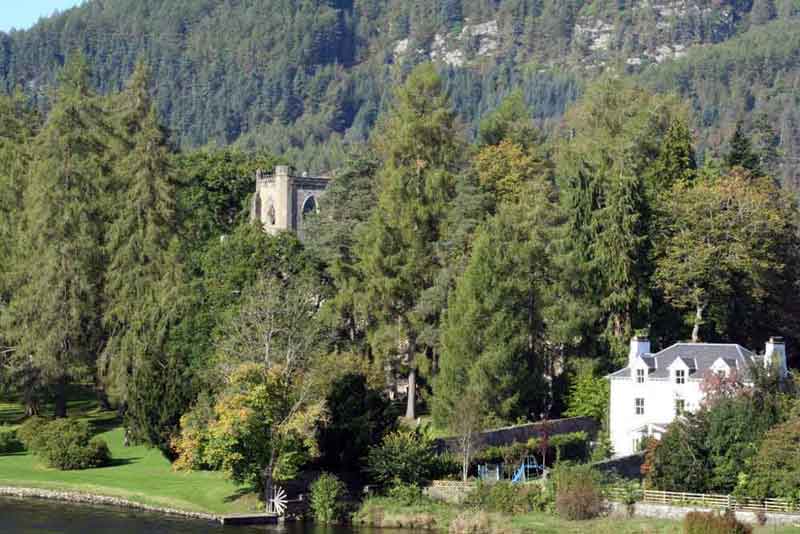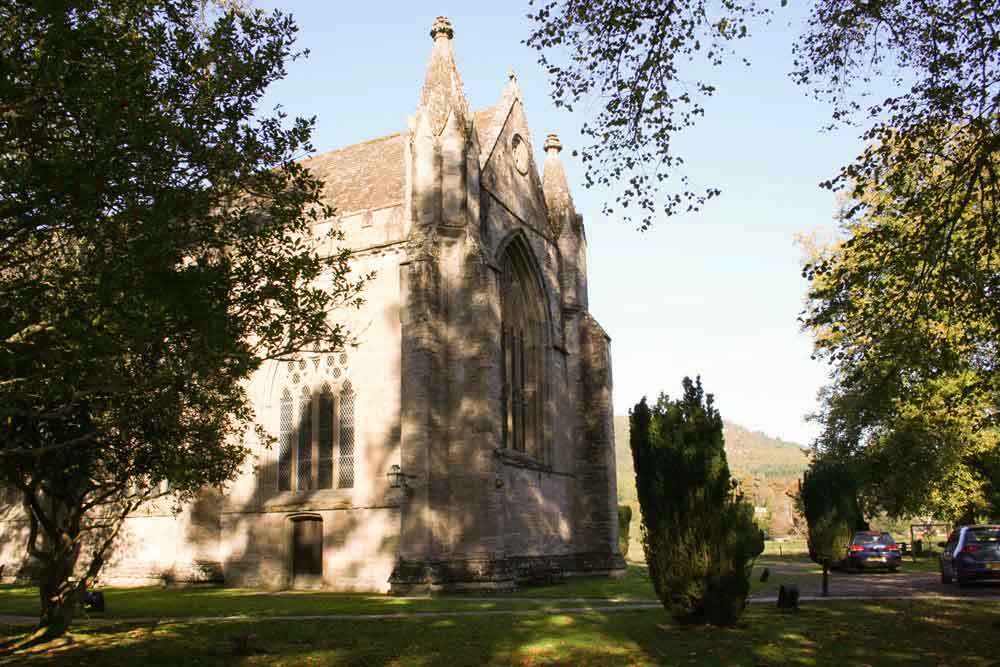Dunkeld Cathedral stands within one of the most beautiful and historic towns in Scotland.

About Dunkeld Cathedral
The town of Dunkeld and its cathedral are now part of the Atholl Estates, which stretch north to Blair Atholl Castle, the seat of Clan Murray and the traditional home of the Earls and Dukes of Atholl,
Dunkeld’s fascinating story begins very early, at some point in the late 6th or early 7th century.
Dunkeld Cathedral & the Dukes of Atholl
A reminder of the close links with the Murrays is, the Atholl Memorial Fountain, built in 1866. It stands in the Market Cross, at the heart of the oldest part of Dunkeld.
The memorial is dedicated to George Augustus Frederick John Graham, 6th Duke of Atholl who introduced a piped water supply to Dunkeld.
Previously all water had to be drawn from the River Tay.
St Columba
Although evidence is unclear, a simple wattle church was built by Celtic missionaries, followers of St Columba, at the point where the River Braan joins the River Tay. A larger building was later constructed in Dunkeld by a Pictish king.
However, despite Dunkeld’s non-coastal location, it was frequently the target of Viking raids.
In 875, following a major Viking victory at Dollar in modern Clackmannanshire the lowlands of Scotland were occupied for many years forcing the removal of Columba’s relics from Dunkeld to Ireland.
In 903 the Vikings plundered, “Dunkeld and all of Scotland” but were later comprehensively beaten by Constantine II somewhere in Perthshire.
University of Glasgow’s Professor Dauvit Broun acknowledging the importance of Constantine’s victory said that there were no more Viking invasions for half a century.

By the 10th century, although Dunkeld continued as a religious centre, the administrative focus of the church moved to Kilrymont, today’s St Andrews.
The cathedral we see today dates from 1318 although building continued until the Reformation, an event that brought considerable destruction.
Apart from the restored choir, which is used as a Church of Scotland parish church, the remains are managed by Historic Environment Scotland.
Dunkeld Cathedral was the final resting place of Alexander Stewart, the first Earl of Buchan (c. 1345-1405). The fourth son of King Robert II is remembered as one of Scotland’s most unpleasant characters.
His epithet the Wolf of Badenoch was well earned following his burning of Elgin Cathedral. His well-worn stone effigy, dressed in full armour lies in the cathedral choir, a powerful reminder of violent times in the Highlands of Scotland.
People of Medieval Scotland
Of course, it’s the people associated with the church in Dunkeld that really bring the story alive.
For those who want to dig a little deeper into their ecclesiastical life the remarkable and rather addictive database, People of Medieval Scotland 1093-1314 created by Glasgow University and Education Scotland offers that chance.
The tranquil setting of today’s cathedral is in sharp contrast to the region in Jacobean times as both the town and cathedral were the sites of fierce conflict between Jacobites and supporters of King William (of Orange).
Battle of Killiecrankie
At the Battle of Killiecrankie (July 1689) fought less than 20 miles from Dunkeld, Jacobite, mainly Highland, forces under John Graham of Claverhouse, Viscount Dundee, defeated government forces loyal to William.
The subsequent Battle of Dunkeld 17-21 August was significant although unusual because of its urban nature. If the Jacobites triumphed, Perth, Stirling and lowland Scotland could fall to the Catholic King James.
As the Jacobite army approached Dunkeld, government forces, including men from the newly formed Cameronians (Scottish Rifles) took up defensive positions among the houses and the cathedral.
However, as ammunition ran low on both sides, brutal hand-to-hand fighting followed.
Although hopelessly outnumbered by the Jacobites, the government soldiers eventually prevailed. With houses ablaze, Dunkeld was almost totally destroyed.
Related content
The picture painted of Dunkeld today is a gentler one. Vikings have long since left our shores and the sound of musket fire has faded.
However, for the more inquisitive visitor to this Perthshire town, some evocative reminders of much earlier times remain.
They may now be distant memories perhaps but nonetheless potent symbols of Dunkeld’s unique place in Scotland’s history.
Historic Environment Scotland – Dunkeld Cathedral Visitor Information
For information on opening hours, cost of entry and other tips to help you plan your visit, go to the Cathedral website.